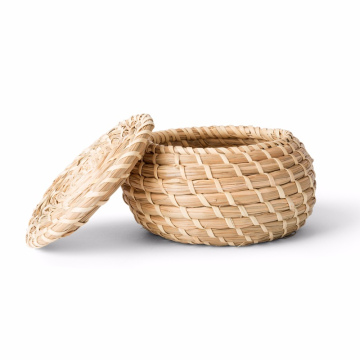The History of Kuri Kinton: Japan’s Luxurious Sweet Chestnut Dish
Kuri Kinton (栗きんとん) is a luxurious Japanese dish made from sweet chestnuts (kuri) and sweetened mashed potatoes or sweet potato. Known for its golden color, smooth texture, and subtly sweet flavor, Kuri Kinton is often associated with celebratory occasions in Japan, particularly during the New Year (Shogatsu). This dish embodies the culinary sophistication and symbolic meanings tied to Japanese cuisine, where every ingredient and preparation method holds a deeper cultural significance.
Origins: A Symbol of Wealth and Prosperity
The origins of Kuri Kinton can be traced back to the Edo period (1603–1868), when it first emerged as a refined sweet used in the traditional Japanese New Year’s feast, or osechi-ryori. The dish is made primarily with sweet chestnuts and a base of sweet potatoes or Kintō-nabe (sweetened mashed potato). Its luxurious nature comes from the use of chestnuts, which were historically considered a special, seasonal delicacy.
In ancient Japan, chestnuts were harvested in autumn and were often seen as a symbol of prosperity and abundance. They were associated with good fortune and the hope for wealth in the coming year. This symbolic connection to success and prosperity helped make Kuri Kinton a central part of the New Year’s celebrations.
The dish’s name, "Kinton," is thought to derive from the Japanese word "kin" (金), meaning gold, due to its bright, golden-yellow color, which is traditionally linked to wealth and fortune. The sweet, golden color of the dish also symbolizes the hope for financial prosperity in the coming year.
Culinary Significance: A Delicate Balance of Flavors and Textures
Kuri Kinton represents a pinnacle of culinary refinement in Japanese cuisine. The combination of sweet chestnuts and sweet potatoes results in a dish that is both smooth and velvety with a subtle sweetness. The chestnuts add a nutty richness, while the sweet potatoes offer a creamy texture, making the dish a harmonious blend of both flavor and texture.
Key Ingredients:
- Sweet Chestnuts (Kuri) – Known for their earthy, sweet flavor, chestnuts are the main component of Kuri Kinton. They are typically boiled or roasted to soften them, then peeled and mashed before being combined with the sweet potatoes.
- Sweet Potatoes (Satsumaimo) – In many recipes, Japanese sweet potatoes are mashed and mixed with the chestnuts. The naturally sweet, dense, and starchy texture of Satsumaimo makes them the perfect base to balance the chestnuts' flavors.
- Sugar and Syrup – Sugar or honey is used to sweeten the mixture, which is often combined with a little bit of mirin or sake for added depth and a hint of umami.
The final result is a smooth, rich paste, often molded into small balls or decorative shapes, creating an elegant, refined dish that appeals to the eyes and the palate.
Cultural and Symbolic Meaning
Kuri Kinton is more than just a dessert; it is deeply rooted in Japan’s symbolic food traditions. In Japan, food is often prepared with particular symbolic meanings attached to it, especially during New Year’s celebrations, when the goal is to bring luck, prosperity, and happiness to the family.
- Golden Color for Wealth – The golden-yellow hue of Kuri Kinton symbolizes good fortune and financial prosperity, qualities that are often sought after in the new year.
- Sweet Chestnuts for Abundance – Chestnuts, as a symbol of wealth and abundance, represent the desire for a prosperous year ahead. The chestnuts are also a traditional harvest food, representing the cycle of nature and the bounty of the seasons.
- Auspicious Start to the Year – Traditionally, New Year’s dishes like Kuri Kinton are consumed during Shogatsu (New Year), marking the beginning of the year with wishes for good health, fortune, and success. These dishes are consumed as part of a larger feast known as osechi-ryori, which consists of various foods, each symbolizing different positive attributes.
The dish has a strong connection to culinary ritual, where the preparation and consumption of food are intertwined with spiritual and cultural practices aimed at ensuring prosperity and happiness.
Evolution and Modern-Day Versions
While Kuri Kinton has maintained its traditional roots, it has also evolved over the years to fit modern tastes and occasions. Traditionally prepared for New Year’s, it is now served as a luxurious treat in other contexts, such as weddings, special family celebrations, and high-end restaurants. The rise of gourmet Kuri Kinton has introduced varieties using more premium ingredients, such as aged chestnuts or special seasonal sweet potatoes.
Modern Variations:
- Pre-packaged Kuri Kinton – In recent years, many supermarkets and online stores offer pre-made Kuri Kinton, making it more accessible to people who may not have the time or skill to prepare the dish from scratch.
- Western Influence – Some chefs have given Kuri Kinton a Western twist by adding elements like chocolate, whipped cream, or even using it as a filling in pastries and cakes.
- Vegan Versions – As plant-based diets become more popular, some modern interpretations of Kuri Kinton use plant-based sweeteners and vegan substitutes for butter, catering to a broader range of dietary preferences.
How Kuri Kinton is Made: A Culinary Process of Precision and Care
The preparation of Kuri Kinton requires culinary expertise and attention to detail. The chestnuts must be properly cooked to soften them, and the sweet potatoes should be mashed until they reach the right smooth texture. The sweet chestnuts are then mixed with the sweet potatoes and sweetened to create a rich and balanced flavor.
Traditional Preparation Steps:
- Preparing the Chestnuts – Chestnuts are boiled or roasted, then carefully peeled to remove the tough outer shell and the thin inner skin. This step can be labor-intensive but is key to achieving the smooth texture that Kuri Kinton is known for.
- Mashing the Sweet Potatoes – The sweet potatoes are boiled, then mashed until smooth, creating a dense, starchy base. This forms the perfect platform for the chestnuts to blend into.
- Combining and Sweetening – The chestnuts and sweet potatoes are mixed together, then sweetened with sugar, syrup, or honey. Some recipes add a touch of mirin or sake to enhance the overall flavor, creating a complex sweetness that complements the nutty chestnuts.
- Shaping and Serving – The mixture is often molded into round balls or pressed into small containers, creating a beautiful presentation. It is typically served chilled or at room temperature, allowing its flavors to meld and its texture to remain smooth and creamy.
Conclusion: Kuri Kinton as a Culinary Tradition
Kuri Kinton is not only a delicious sweet but also a culinary treasure that embodies the traditions, culture, and symbolic meanings of Japan’s food. From its humble origins as part of the New Year’s feast to its modern-day interpretations, Kuri Kinton remains an elegant and luxurious dish that symbolizes prosperity, abundance, and good fortune. Whether served as part of a festive meal or enjoyed as a special treat, this dish continues to be an essential part of Japanese culinary heritage.





